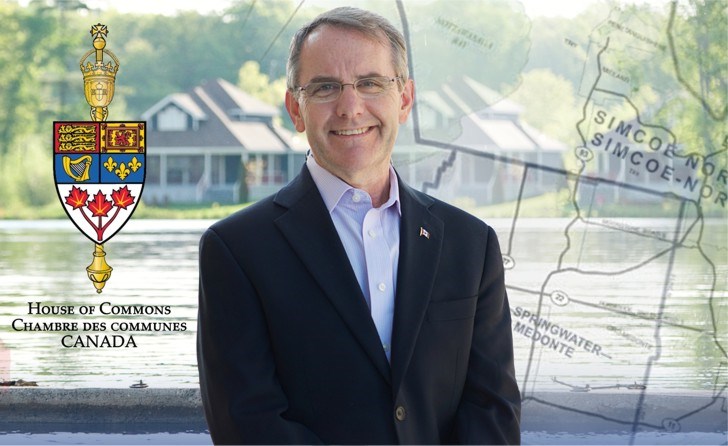Simcoe North MP Bruce Stanton’s office is busy these days helping area residents stuck in other countries amid the COVID-19 global pandemic.
“More than a thousand from our riding are away right now,” said Stanton, who along with his staff have been working around the clock to try to bring constituents home who might be experiencing trouble leaving foreign soil.
One of those residents successfully came home after Stanton’s office became involved; followed by some wrangling between Global Affairs Canada and the Columbian government.
The student had been aboard a catamaran that wasn’t allowed to dock in Panama so had to sail back to Columbia where the young man and his group were again denied entry even though it was their original departure point.
“It took about 36 hours, but he was able to get passage through Columbia to the airport to come home,” Stanton said. “We’re telling people to be registered with Global Affairs Canada.”
Staff at both the Midland and Orillia constituency offices have also been answering myriad inquiries through social media, by email and telephone from those now outside the country.
“It’s interesting because it’s only been a week, but it seems more like a month,” Stanton said. “It’s only been a week since I arrived home from the suspension of Parliament.”
The office has also heard from a couple of area residents stuck on the cruise ship the Norwegian Jewel now cruising around the Pacific Ocean. The ship was allowed to dock in Hawaii earlier this week to refuel and gather more supplies, but only Americans were allowed to disembark even though there were no reported cases of coronavirus onboard.
Other constituents are stuck in Europe, including exchange students, and South Americans countries like Ecuador where a local couple are among more than 200 Canadians who learned their March 26 flight home has been cancelled with no other options readily available.
“Peru has essentially declared martial law,” he said, adding there’s a strong chance some constituents won’t be able to return in the foreseeable future if they’re stuck in certain regions.
“There are now closed borders, airlines cutting back flights and restrictions on airspace. This is ever-evolving, hour by hour. There will be many over the next month who will be stuck.”
Stanton said the office is also fielding plenty of questions from snowbirds, especially since heightened restrictions for non-essential travel take effect on the U.S.-Canada border starting this weekend.
“We’re getting a lot of calls from snowbirds asking about the border,” he said, noting a Canadian won’t be denied re-entry into the country but might have to undergo a 14-day quarantine. “We tell them they’ll be asked about their health.”
Stanton said it's essential that people stay informed and knowledgeable about the virus by regularly checking out the websites of both accredited health agencies along with legitimate journalism sources.
“Certainly, there’s been a good bit of information getting out to people,” he said.
And despite the efforts of many and government warnings up to two weeks ago urging Canadians to return home as soon as possible, Stanton said he expects thousands won’t be able to get back to the country anytime soon, especially as borders around the world tighten.
“There are regularly three million Canadians travelling in other parts of the world,” he said, adding the federal government has said it won’t be sponsoring repatriation flights using its own planes to pick up stranded Canadians.
Stanton said the last time the globe faced a challenge similar to COVID-19 was back in 2009-2010 when H1N1 led to worldwide infections somewhere north of 700 million and between 152,000 and 575,000 fatalities.
“I suspect the reason we do not recall the same disruption was because H1N1 in that strain was about the same virulence as the common, seasonal flu – with the same mortality rate of about 0.3%,” Stanton said, noting a typical flu seasons kills between 290,000 and 650,000 a year with a fatality rate of less than 0.1%.
He added: “By comparison, COVID-19 currently has about a 4% mortality rate; 15% hospitalization rate – or seems to be about 10 times that of the H1N1 virus in 2009.”
